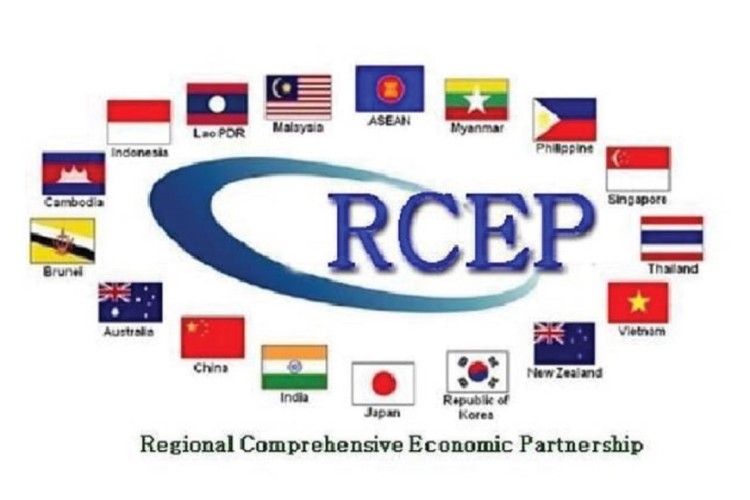
Joining RECP would hurt India more than FTA with China: GTRI
NEW DELHI : While many like Niti Aayog Chief Executive officer, Word Bank and some economists have renewed the call for India joining the Regional Comprehensive Economic Partnership (RCEP), the new report said potential loss for the country from such a move would be more than what it could be if India signs a bilateral free trade agreement with China. .
“India cannot have a bilateral FTA with China due to its large trade deficit. However, joining RCEP would be even more problematic. In a bilateral FTA with China, India could delay tariff reductions, but under RCEP, Chinese goods could enter India easily through other RCEP countries with minimal processing right from the start,” the report by Global Trade Research Initiative (GTRI) said.
One of the arguments that joining RCEP will make India part of the grouping that accounts for 30% of the global trade will offer massive market access falls in the face of the fact that India already has FTAs with 13 of the 15 members of the RCEP excluding China and New Zealand. “Trade with New Zealand is small thus any benefits from RCEP will likely be minimal and incremental,” GTRI’s co-founder Ajay Srivastava said.
Post RCEP signed in 2020 the deficit of the member countries like Japan and South Korea with China has worsened. ASEAN’s trade deficit with China grew sharply to $ 135.6 billion in 2023 from $ 81.7 billion in 2020. Japan’s deficit doubled, and for the first time, South Korea is projected to experience a trade deficit with China this year. “This indicates that RCEP’s gains are disproportionately skewed toward China, leading to unfair competition and validating India’s fears that joining would lead to a surge in Chinese imports without corresponding benefits,” GTRI said.
India joined the discussions on formulating RCEP in 2013 and then in 2019 decided to pull out of the negotiations. Others went on to sign the deal in 2020.
Another argument suggests RCEP membership would help India integrate into regional value chains (GVCs). But despite having zero-tariff trade of most industrial goods with ASEAN, Japan, and South Korea for over a decade, India has not become a significant GVC player. Time taking port-customs clearance and low ease-of-doing-business are key barriers.
“India’s prospects for meaningful GVC integration remain li/mited without internal reforms to improve operational efficiencies and lower costs on account of infrastructural deficiencies,” he said.
The possibility of expanding markets for Indian MSMEs is also frequently cited. Reality is, Indian MSMEs struggle to compete with large-scale Chinese manufacturers. Introducing tariff-free Chinese goods into India could overwhelm MSMEs, as their smaller-scale operations. “ Indian MSMEs will gain most by MFN tariff review that allows low tariff input imports and not by India joining RCEP,” GTRI said.
It is also argued that India’s agriculture and service sectors could gain from RCEP’s vast market. However, RCEP countries generally offer limited tariff concessions for agricultural products, and non-tariff barriers further hinder agricultural trade. Additionally, RCEP members have largely resisted India’s proposals for service sector access, making the potential gains for these sectors uncertain.
RCEP membership is seen by a few economists as a pathway to attract more Foreign Direct Investment (FDI) to India. But the link between FTAs and FDI growth is mixed. High tariff barriers have attracted substantial investments in India’s auto sector while Australia lost its manufacturing base as it brought down tariffs, the report said.
“Both domestic and foreign investors are unlikely to create new manufacturing capacities in India if they have to compete with duty-free imports from China in the Indian market. So, if India were to join RCEP, not only would it fail to become the preferred investment destination of investors seeking to pursue a China+1 strategy, but would also result in flight of domestic capital in the manufacturing sector out of India,” Srivastava said.
Zero tariff imports would conflict with India’s domestic manufacturing programs, like the Production Linked Incentive (PLI) and Phased Manufacturing Performance (PMP), which favour low import duties on raw materials but higher duties on finished goods.
By staying out of RCEP, India positioned itself to diversify its trade partners and reduce the risk of overdependence on China. In Trump 2.0, tariff action on China will intensify. India’s focus on expanding partnerships with the United States, the European Union, and other key economies aligns better with its strategy to reduce reliance on a single country, particularly one with whom it shares a complex economic relationship.
Source : Financial Express

